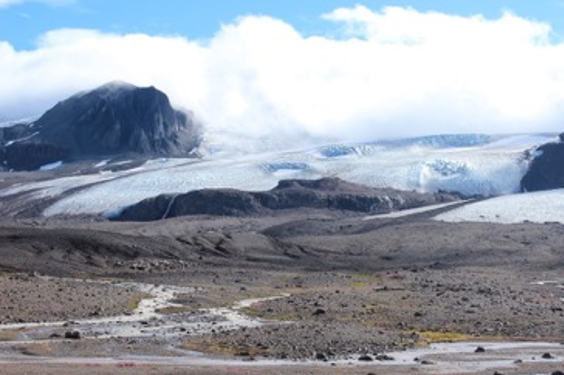Glacial retreat will affect salmon habitat
May 14, 2020Pitman KJ, Moore JW, Sloat MR, Beaudreau AH, Bidlack AL, Brenner RE, Hood EW, Pess GR, Mantua NJ, Milner AM, Radić V, Reeves GH, Schindler DE, and Whited DC. 2020. Glacier retreat and Pacific salmon. BioScience 70: 220–36.
In a nutshell
- Glaciers in western North America are retreating rapidly due to climate warming, with potential implications for downstream Pacific salmon habitat
- Conceptual models designed to assess how glacier retreat will affect salmon habitat indicated that downstream effects will vary both geographically and over time
- Populations in more southern regions of Pacific salmon range will likely experience diminished water flow and higher water temperatures as glaciers retreat and downstream water supply is reduced, whereas salmon in more northerly regions may benefit from creation of new habitat as glaciers pull back
- The potential impacts of glacier retreat on salmon habitat further underscores the need for management and conservation strategies that consider both short- and long-term environmental change

The analysis indicated that populations toward the southern extent of salmon range, where glaciers occur primarily at higher elevations, will likely experience reductions in flow rates and higher water temperatures with increasing glacier loss, putting stocks already at risk from numerous other anthropogenic impacts under even greater stress. In contrast, however, glacier retreat may actually benefit salmon in areas of extensive glacier coverage, such as south-central Alaska, as their physical withdrawal reconfigures the surrounding landscape and exposes new areas suitable for the formation of lakes and rivers. Such expansion of freshwater habitat opportunities could enhance salmon productivity in these regions.

Glaciers are retreating at an accelerating rate in the face of climate change; some salmon stand to benefit, while other populations are likely to lose out. (Photo by Jonathan Moore)
In addition, the analysis shows that salmon response to changes incurred by glacier retreat will be a function of “when” in addition to “where,” in that alterations in downstream environmental conditions will vary not only geographically but also with time. Pitman points out that salmon are highly adaptive to changes in their environment, and this flexibility may allow populations to continually adjust to evolving conditions as the watersheds transition to new forms. “Salmon have evolved over millennia in rivers that were dynamic and constantly changing, and if given enough time, they are well adapted to cope with the landscape changes associated with glacier retreat,” she says. “As such, the impact glacier retreat will have on salmon populations depends on the phase of glacier retreat.”

Glacier retreat is creating rivers and lakes that salmon can colonize. (Photo by Kara Pitman)
Changes in downstream habitat as glaciers retreat over the coming decades is yet another indication of the extent of direct and indirect human impacts on the aquatic ecosystems utilized by Pacific salmon, and further complicates their conservation and management. Pitman contends that meeting the increasingly complex challenge of mitigating human-related impacts and maintaining salmon productivity into the future requires the development of broader-scale and more forward-looking conservation approaches that focus more on maintaining long-term sustainability and less on short-term outcomes. “Salmon productivity is likely to shift geographically over the coming decades, not only due to glacier retreat, but also climate change, ocean changes, and habitat destruction that are impacting salmon biodiversity,” she says. “Salmon managers must consider protection and management of the future state of salmon and their ecosystems, and not just the present.”
Science Spotlight by Ken Ferguson
